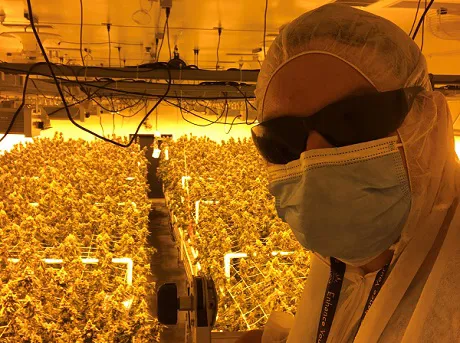Indoor cannabis cultivation can be described as complex systems: there are so many elements that make up an indoor facility, that it is not surprising to see many growers relying on experts with different backgrounds, in order to have all the different components ‘playing the right symphony.’ Yet, there are still challenges that lie in the path to the perfect crop. Of all the things that factor into indoor cannabis cultivation, humidity surely is one of the most important, especially in those places where days are very hot, and nights are rather cold. “When it comes to indoor, you have to manage both temperature and humidity,” says Scott Dybas with MicroCool. “It is very important that throughout the process, the temperature and humidity are consistent to the plants’ needs. Most growers are very informed and concerned about temperature but keeping the right humidity level gets less attention.”

Overcompensating with HVAC
California is one of those states where growers experience humidity issues the most, as a consequence of the very hot and dry climate, many times caused by the regional Santa Ana winds. “If you grow in California, you might experience quite consistent temperature spikes,” Scott continues. “To prevent such issues from occurring, many growers overcompensate with the HVAC load – which is different from facility to facility, and depends in large part on the light a grower uses. The HVAC load in certain grows in California is so high, that it ends up removing most of the humidity.”
This is especially important from a VPD perspective. “A lot of growers inject CO2 to maximize the plants' growth,” Adam Murphy remarks. “But in order for this to work, the VPD needs to be at a specific level. And that’s exactly where we come into play.”
Humidity control
Microcool’s solution utilizes a high-pressure pump with multiple nozzles that put out a very consistent evaporative fog. Very interesting however is the fact that each nozzle has its own solenoid which is individually controlled. “In this way, it is possible to control the on and off time for the solenoids, which can be adjusted to the wishes of the growers. Therefore, it is possible to control the humidification and prevent wetting. The most important aspect is the flexible configuration of the systems when it comes to the size of the space whether used for greenhouse or indoor growing. Our system can also be plugged into a controller, making it easier for a grower to manage different pieces of equipment and make changes to environment.”
“Thanks to our 40 years experience in the horticulture industry, we are poised to support growers with their humidity challenges right now, but also when legalization in the industry is not only on the state level, but also on a federal level. If you need stable humidity, MicroCool is there for a scalable product,” Adam concludes.
For more information:
MicroCool
[email protected]
www.microcool.com
